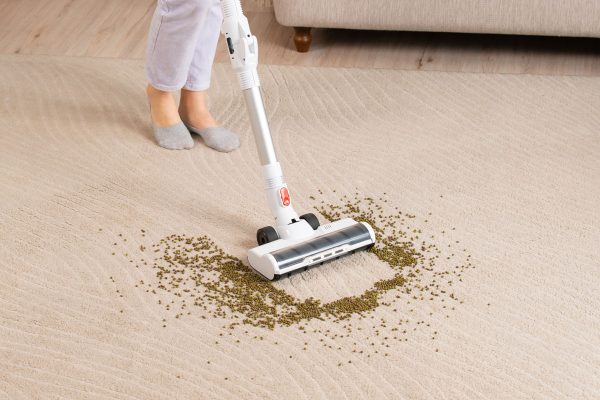Are you planning to install a runner, and do you want to know the size of staples that you should use? You’ve come to the right place, for we have researched this question, and we have the answer for you.
Half-inch T50 staples on a staple gun are common for installing stair runners. However, it is important to adjust this size if you plan to use a thicker stair runner.
The best way to learn how to adapt the size of your staples to your chosen carpet is to learn how to install a stair runner. Learn how to install one in the succeeding sections.
Read on!
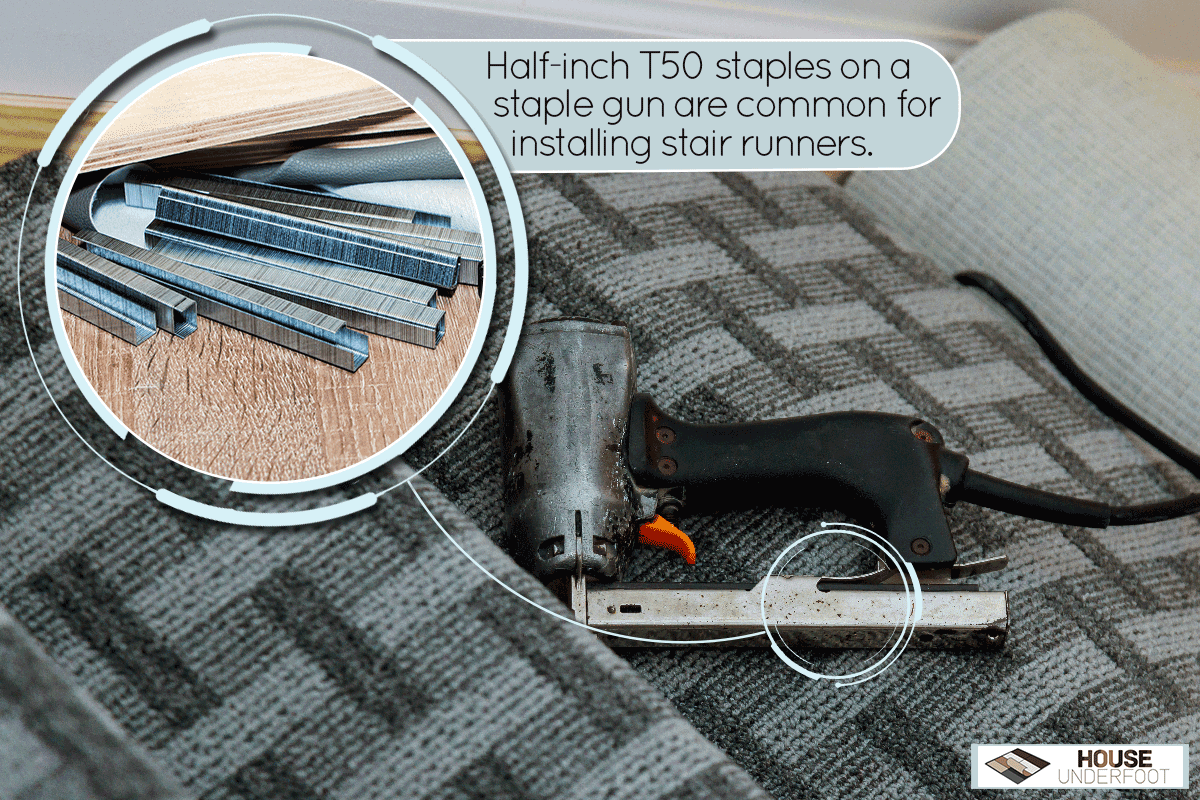
What are the advantages of installing a stair runner?
Some homeowners are still wondering if installing a stair runner is worth the cost and effort. If you are still on the fence about installing a stair runner, read the five benefits of having a stair runner below.
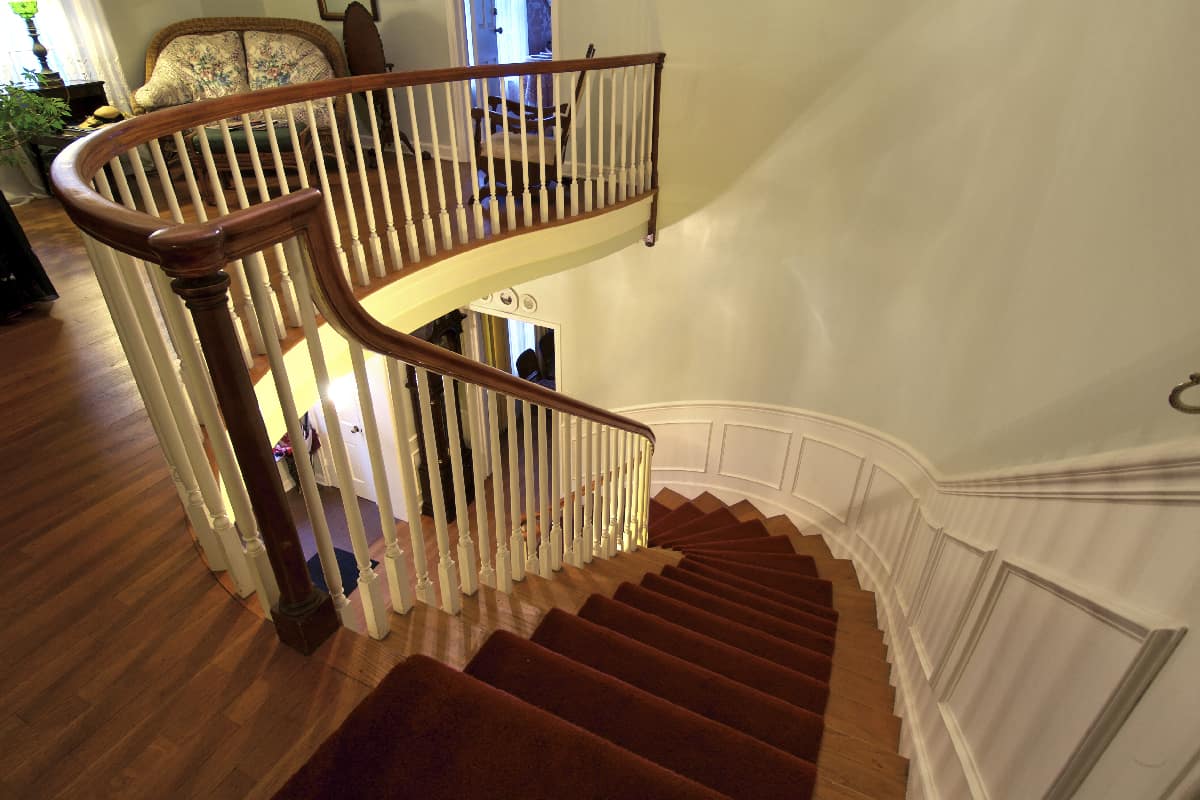
Safety
The best benefit of a stair runner is safety. This is not just for children and the elderly in your home.
Anyone can fall victim to slippery stairs. Someone could get up the stairs with wet feet or shoes and make the surface slippery for the next person—or themselves.
A stair runner prevents that situation by covering the surface of the stairs, protecting it from moisture. It prevents slipping by providing a surface with more traction because of the additional texture.
If you’re the type who likes to exercise, your stairs will become a safe exercise area with stair runners.
Stair Protection
A stair runner covers most of the width of the surface of the stairs. It protects the surface of the stairs by receiving foot traffic that contributes the most to the wearing of your hardwood stairs.
It can protect the wood from scratches and even from pets clawing it.
Less Maintenance
Since the stair runners cover a lot of the stairs’ surface, you do not need to apply wood treatments like varnish, oil, or wax to make your stairs look great. This reduces the time that you might typically spend on cleaning and home maintenance.
Noise Reduction
Children running up and down the stairs will no longer cause a racket inside your house. Stair runners help reduce the noise created by walking—or running—on the wooden surface of your stairs.
You will be thankful for this when you are catching up on your sleep, needing a peaceful workspace, or when you have a baby that is sensitive to sound.
Adds Style
Stair runners make any stairway look grand and elegant. It doesn’t matter if you have new stairs or a set that has been longstanding for a century. Stair runners will make it look fabulous.
Stair runners will cover most of the imperfections of your stairs and draw attention to them.
How to install a stair runner?

The guide below does not include how to pick a stair runner. You need to do that before you start with the steps below. Consider your own style, the coordinating colors of your home, and the texture you'd prefer when choosing stair carpeting.
Preparing The Stairs
You can clean the stairs and apply a wood treatment that you like. It will be a challenge to apply the wood treatment once the stair runner is in place.
This step is totally optional. Although a wood treatment will help keep your stairs in great condition.
Take Initial Measurements
- Measure the tread and riser of your stairs. The tread is the surface where you walk on, while the riser is the vertical distance between two treads.
- Count the number of treads on your stairs and multiply it by the measurement of the tread.
- Similarly, count the number of risers and multiply it by the measurement of the riser.
- Add the two results of the multiplication from Steps 2 and 3. Add 6 to 8 inches to the total. This is the length of the runner that you need to cover your stairs. Round up any decimals to the next highest whole number.
Marking The Positions
- Measure the width of the tread and divide it by two. This will give you the location of the center of the tread.
- Mark the location of the center using a pencil.
- Measure the width of the runner and divide it by two. This is the center of the runner.
- Mark the center of the runner with a pencil.
- Line up the center of the tread and the center of the runner.
- Get some painter’s tape and use it to mark the two edges of the stair runner.
- Measure the distance from the painter’s tape to the edge of the tread. This is to make sure that the two exposed areas are equal. Adjust accordingly if you need to.
- Use a yardstick or a similar long ruler to transfer the measurements to the other treads of your stairs and mark the edges with painter’s tape.
Installing Carpet Pads
- Position the rug pad on the tread of the stairs.
- Measure half an inch from the painter’s tape on both sides and trim the rug pad at this width.
- If you’re doing a flat top installation, measure a half-inch overhang from the front edge of the stair tread. If you’re doing a wrap installation, increase that overhang to 3 inches.
- Cut the carpet pad to your measurements.
- Cut off the two edges of the carpet pads at a 45-degree angle.
- Use this carpet pad to make as many carpet pads as you need.
- Align the first carpet pad to the center of the stair tread to get it centered. Leave a space equivalent to a finger's width between the riser and the carpet pad. The edge with 45-degree cuts goes under the nose of the stairs.
- Drive one staple through the center of the carpet pad.
- Drive two more staples, one on each side of the carpet pad.
- Pull the carpet pad tight over the stair tread without stretching it. Staple the pad under the nose of the stairs. Staple the center and the two ends of the pad. The nose of the staircase is the protruding edge that hangs over the risers.
- Repeat Steps 7 to 10 to cover the rest of the stair treads with carpet pads.
Note: If you’re installing a flat top, you don’t have to staple the pads. You can use double-sided tape to keep the pads in place.


Arrow T50 half-inch stainless steel staples are available on Amazon through this link.
Installing The Carpet
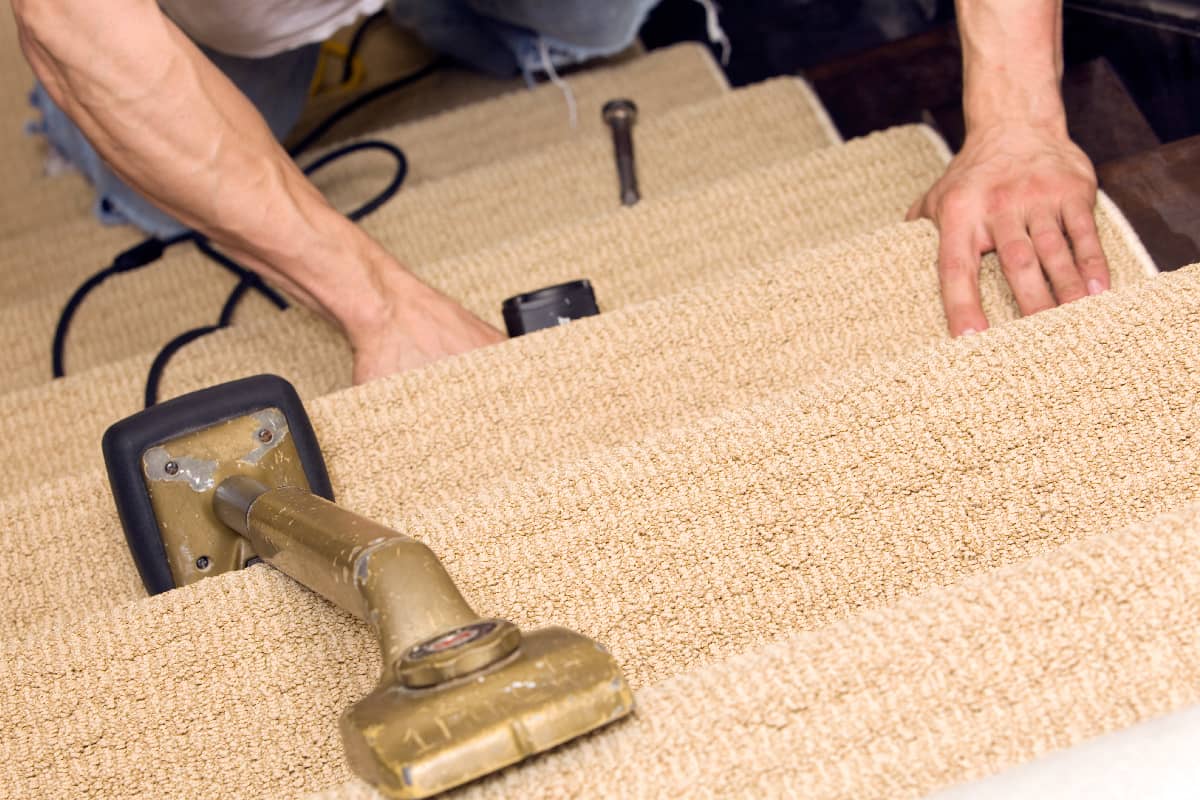
- Cut a double-sided tape to almost the width of the carpet.
- Press the tape firmly on the edge of the carpet.
- Line the edge of the carpet to the top of the first riser at the top of the stairs. Make sure that it lines up with the painter’s tape.
- Start to staple the carpet at the center, then add another staple every 3 inches. Make sure to drive a staple at the outer edges of the carpet. Check that you are using staple wires that can go through the carpet and still have enough length. At least a quarter of an inch should go through the hardwood to keep your carpet securely in place.
- Smoothen the carpet against the riser. Use a plastic bolster chisel to press the carpet at the crease of the next tread.
- Staple the carpet at the center base of the riser. Drive another staple every 3 inches.
- Repeat the same steps until you reach the bottom of the stairs or until you run out of carpet.
- If the length of the carpet is not enough, you will need to add a second stair runner. End the carpet at the bottom of the riser. Add two inches to the length of the carpet for overlapping.
- Install the next carpet over the 2-inch overlap. At this point, check your staple wires once more. Make sure that it has enough length to go through the two carpets and still has at least a quarter of an inch left to penetrate the hardwood.
- Finish the carpet installation at the base of the last riser by measuring 3 inches additional length. Use a yardstick to cut the carpet. Fold the extra 3 inches to make a hem at the end of the carpet that sits at the bottom of the riser. Staple the center, then staple every 3 inches from the center.
Note: If you have molding at the base of the stairs, fold the carpet so it sits just above the molding.


TradeUnderlay plastic bolster chisel is available on Amazon through this link.
Conclusion
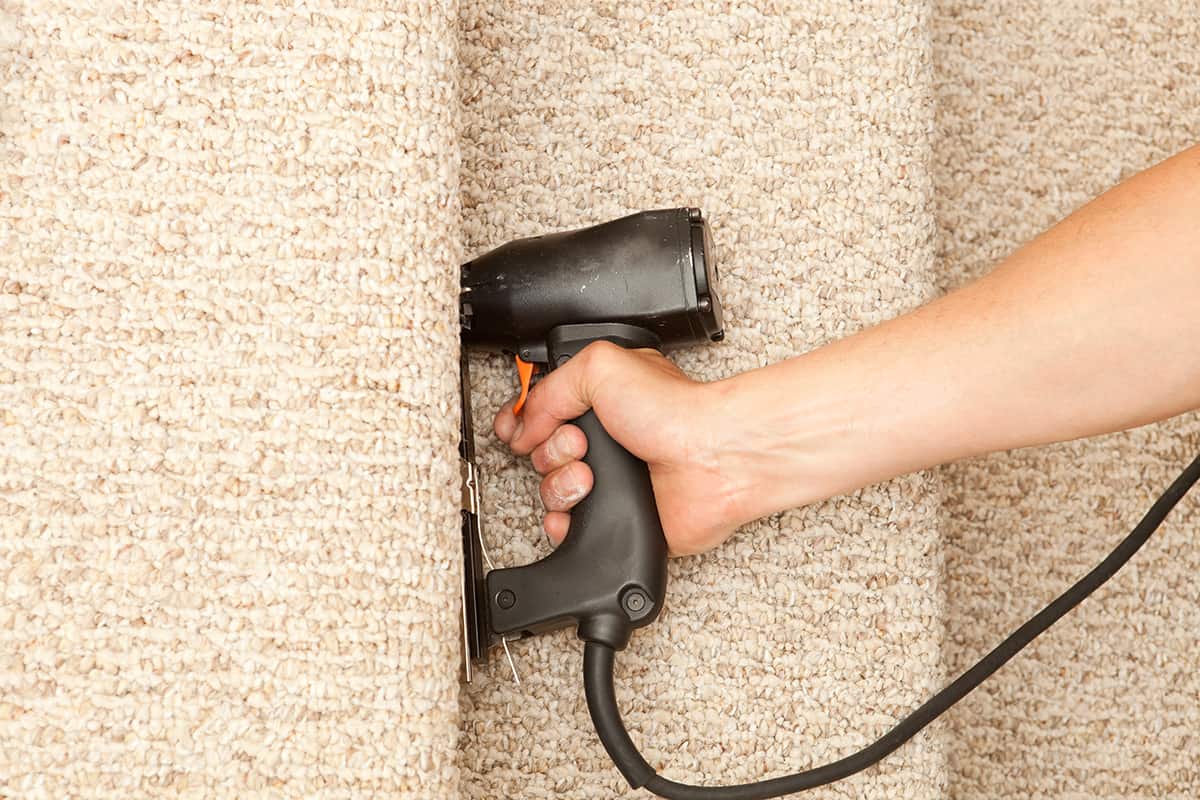
The size of the staples to use for stair runners should have enough length to go through twice the thickness of the carpet and have at least a quarter of an inch of length left to go through the wood. Using the guide above should achieve a neatly secured stair runner.
If you found this article interesting, why not check the two articles below too:

